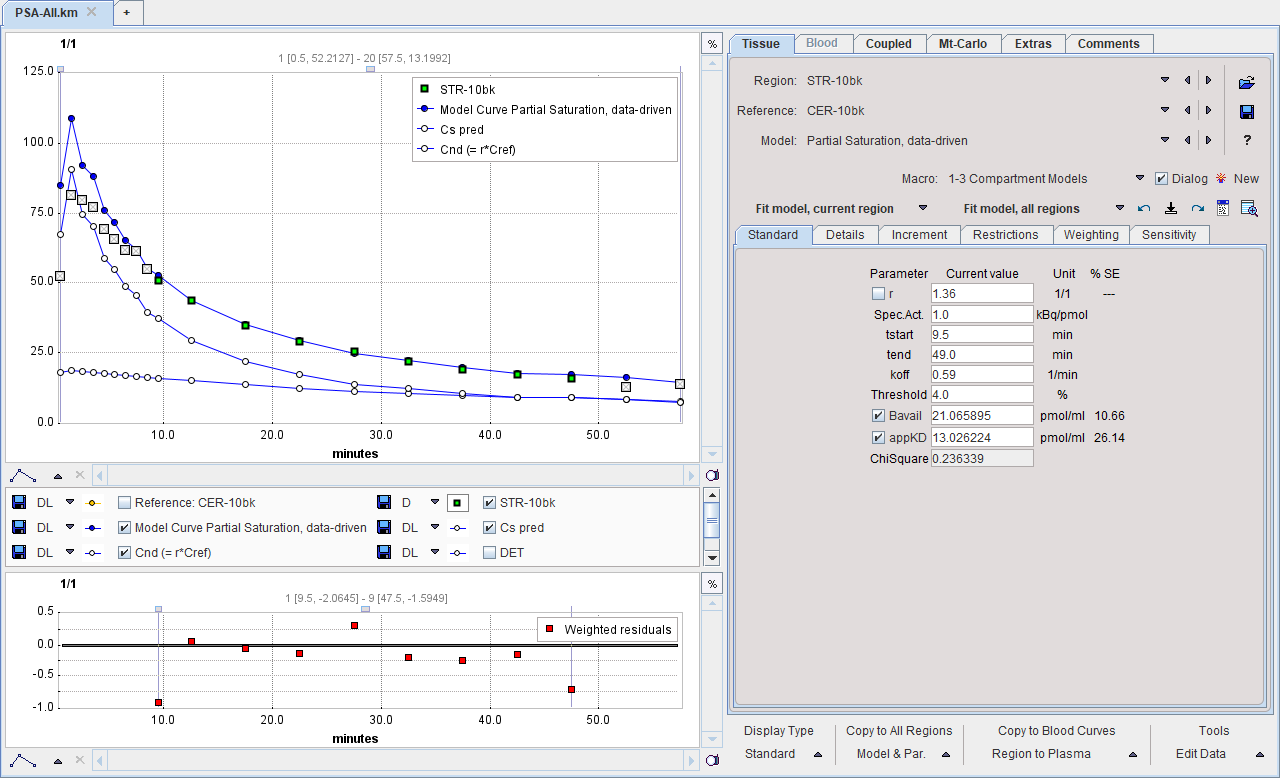Wimberley et al. [1] have developed a data driven strategy for the partial saturation approach (ddPSA) [2] for determining reliable regional estimates of receptor density Bavail and in vivo affinity 1/appKD. It is a reference tissue approach applicable to 11C raclopride which makes it ideal for use in longitudinal studies of neurodegenerative diseases in the rodent.
Operational Equation
The non-linear 2-tissue compartment model with saturable specific binding is illustrated below.

The differential equations for a target tissue can be rearranged [1] to

where CS represents the concentration of specifically bound ligand, CND the concentration of non-displaceable ligand, koff the dissociation constant (taken from in vitro data) and appKD is the reciprocal of the in vivo receptor-ligand affinity. DET is a term related to the dynamic equilibrium of the system.
The ddPSA approach uses the scaled concentration of a reference tissue as an approximation of the CND in the target tissue
CND(t) = r CRef(t)
where r is determined in a presaturation study.
The time course CS(t) is then calculated by
CS(t) = CT(t)-CND(t)
where CT(t) represents the activity concentration in the target tissue.
Using CS(t), CND(t) and the in vitro koff, DET(t) is plotted. When the DET is negligible compared to the CS/CND value, the PET scan is in a dynamic equilibrium state and the CS and CND values can be used for in estimation of Bavail and appKD.
Parameter Fitting
The Partial Saturation, data-driven model is a reference tissue model. The scale factor r for the reference tissue is an input parameter to be determined in a separate experiment. The specific activity Spec. Act. is required for converting kBq/cc data to pmol/ml. tstart and tend define the range within which the data is considered for the fit. koff is the in vitro dissociation constant, and Threshold defines the cutoff value for DET relative to CS/CND.
The fitting procedure switches off all time points with |DET(t)| above the threshold, and estimates Bavail and appKD. As illustrated below, the various curves involved in the model calculations can be enabled for display, for instance DET(t).

Reference
1.Wimberley CJ, Fischer K, Reilhac A, Pichler BJ, Gregoire MC. A data driven method for estimation of B(avail) and appK(D) using a single injection protocol with [(1)(1)C]raclopride in the mouse. Neuroimage. 2014;99:365-76. DOI
2.Delforge J, Spelle L, Bendriem B, Samson Y, Syrota A. Parametric images of benzodiazepine receptor concentration using a partial-saturation injection. J Cereb Blood Flow Metab. 1997;17(3):343-55.